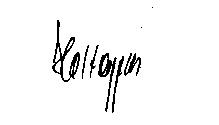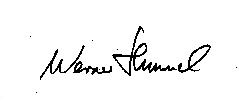CHAPTER 43
CONCLUSIONS
1. The vessel was designed in accordance with the state of the Art and the Rules and Regulations applicable at the time of design and building by one of the shipyards most experienced in the building of such type of ships, which had just completed a Near-Sister-Vessel. (See Chapters 2.1, 2.2, 2.3, 2.4.1 and 2.4.2.and Chapter 15 JAIC)
2. The vessel was constructed in accordance with the state of the Art, the approved design and under the supervision of a very experienced and competent Class-surveyor. (See Chapters 2.4.2, 2.4.3, 2.4.5, 2.4.6 and 2.6. JAIC maintains, that the building yard did not adhere to it's own design criteria (Chapter 15 JAIC).This conclusion however is based on the wrong assumption, that the welding seams found on the wreck were laid during the construction of the vessel. (See Chapters 3.3, 12.5, 29.2 and 30.)
3. The procedure chosen by the Finnish Board of Navigation (FBN) in the issuance of Passengership Safety Certificates whilst the vessel was under it's jurisdiction did not completely comply with the SOLAS Regulations in force at that time, but this failure of FBN did not contribute to the accident. (See Chapters 2.4.4 and 6.5.2)
4. Whilst being owned and managed by her previous Finnish owners (Sally and Silja) the vessel was reasonably well maintained. Design or construction defects were not noted, although the vessel cruised for twelve years in the Baltic Sea. At the time of delivery of the vessel to her new Owners, she had deficiencies, which were however quite normal for a ship of her age and in her trade. These deficiencies were reported by the staff on board to Silja, the then managers of the vessel. This report became known to the new managers, being Nordström & Thulin, who however chose not to take note. These deficiencies then developed fast to the worse and into a substantial contributing cause of the accident. (See Chapters 3.4 and 6.5.1)
5. Acting as mandatory of the Estonian National Maritime Board (ENMB), Bureau Veritas on 7.2.1993 issued an Interim Passengership Safety Certificate for MV ESTONIA. This was done in obvious violation of the relevant Regulations of SOLAS. Had the responsible inspector of Bureau Veritas complied with his duties and refused the issuance of a Passengership Safety Certificate, the new Owners would have been forced to install the extension of the collision bulkhead above main deck and had this been done, the vessel would - with all probability - have survived, despite of all her other deficiencies. (See Chapters 6.4, 6.5 and 9.1)
6. At Sea the vessel was operated recklessly in ice and during bad weather, which caused a further worsening of the deficiencies taken over with the vessel and added new ones, the most outstanding of which was, that the visor was pushed out of its geometry, vibrated and was constantly filled with water to the outside water level at sea. No attempt was made to rectify these deficiencies. It has to be assumed, that the responsible staff at Nordström & Thulin was aware of these further deficiencies as well. (See Chapters 12.1 to 12.6, 16.2 and 30)
7. The most crucial deficiency developed in 1994: The port outer hinge of the bow ramp became twisted, could consequently not be secured properly anymore and lost it's watertightness. Ever since water from the filled visor flowed into the car deck at sea, despite the efforts of the crew to prevent the ingress of water by plugging the gaps with linen and mattresses. As the watertightness of the bow ramp - when deemed to be the extension of the collision bulkhead above main deck - is a mandatory condition of SOLAS, the Rules of Bureau Veritas and the Load Line Convention, MV ESTONIA had lost it's class notation and it's seaworthiness, when being traded with an untight bow ramp. (See Chapters 12.4.3, 12.4.4, 12.5, 16.2 and 29.2)
8. It is common knowledge with the Owners or Operators of Ro-Ro Passengerships, that water on the car deck must under any and all circumstances be avoided as it unavoidably lessens the stability of the vessel, being the vital safety criterion of each passengership. It has to be assumed, that the responsible staff at Nordström & Thulin was aware of the loss of watertightness of the bow ramp and the consequential ingress of water onto the car deck from the water-filled visor. No attempt was made however to rectify this unacceptable condition. (See Chapter 12.5)
9. It should have been detected at least by those whose duty it was, to control safe operation of Passengerships trading between Estonia and Sweden for the benefit of their passengers. This refers especially to the inspections conducted by the inspector of Bureau Veritas - also acting as mandatory of ENMB - shortly before the casualty and - especially - the inspection of MV ESTONIA on the day before the casualty by leading personnel of Sjöfartsinspectionen (SHIPINSPEC) and ENMB. During this inspection the most serious deficiencies at the bow area were found and noted, but - although the vessel could have been stopped by order of the Estonian members of ENMB in Tallinn or by refusal to permit entry into Swedish waters or ports through the leading personnel of Sjöfartsverket - nothing was done. (See Chapters 9.1, 9.3, 12.5, 15 and 16)
10. There were further grave deficiencies in the vessel, when she left for her last voyage:
I. Due to fatigue cracks caused by the vibrations of the visor and unqualified repair work the hinges of the visor had lost nearly all of their design strength. (See Chapters 12.5, 16.2, 29.2, 34.8 and 34.9)
II. The stempost of the visor had been cracked four times due to fatigue caused by the vibration of the visor. Consequently it could not support the weight of the visor anymore. The visor did instead rest on the forepeak deck which fact caused misalignment of the visor and all its locking- and holding devices far exceeding the permissible tolerances. (See Chapters 12.5, 30)
III. The vessel left port with a starboard list, which was caused by uncontrolled water ingress into the vessel through a hole in the shell plating. (See Chapter 17.1) The cargo in the vessel was not lashed according to regulations despite knowledge of vessel's command of the coming heavy weather. (See Chapters 17.2, 18)
11. The grave deficiencies described in 5, 7 and 10 above rendered the vessel unseaworthy. When she left the port of Tallinn, she was not permitted to carry passengers, cargo or crew under all relevant international or Estonian national regulations.
12. The vessel was run on full engine power in very rough seas up and until the casualty. This fact constitutes a gross violation of the principles of good seamanship and shows disrespect for the comfort of the passengers. (See Chapter 20) Had the vessel been in a seaworthy condition however, such facts would not have mattered, as they did not over the past 14,5 years of her trade in the Baltic Sea. Under conditions as given on the night of the 28th of September 1994 this excessive speed started the known deficiencies to interlink and thereby the chain of causes to unravel which led irreversibly to the foundering of MV ESTONIA.
13. This 'Group of Experts' has used all efforts and possibilities available to it to investigate the actual casualty scenario. All available crew members and survivors were interrogated by members of this 'Group of Experts' or by experts instructed by it. (See Chapters 20 and 21) Substantial evidence unknown so far was collected. (See Chapters 22 to 30) The Group purposely refrained from taking refuge to hypothetical assumptions in it's attempt to establish the casualty scenario but rather made it their point to seek the truth based on facts only. Only evidence confirmed by other facts was considered permissible evidence in the establishment of the casualty scenario by this 'Group of Experts'. The result of these efforts is the casualty scenario described in Chapter 31. It demonstrates that the vessel was already in a crucial situation, which should have prompted immediate return at 20.45 hours at which time it was still under coastal shelter. (See Chapter 20) That occasion having been missed the vessel was doomed to death as the water ingress into the car deck constantly increased until it finally became overwhelming.
14. When scrutinizing the underwater videos made available to this 'Group of Experts' by JAIC astonishing facts were discovered. Although these facts do not contribute to the task of the Group, the most important of them shall be reported here briefly:
I. The underside of the port bridge wing had apparently been torn open, when the vessel was already resting on the seabed. (See Chapters 27 and 34.6)
II. Divers of the "official" teams took time to search for, find and salvage a certain suitcase belonging to a gentleman with the reputation of being engaged in the smuggling of weapons. (Chapter 27 and 34.6)
III. There is evidence, that there has been movement of the bow ramp, when the vessel was already resting on the seabed. (See Chapter 34.6)
IV. There is evidence, that other than the "official" diving teams were in the vessel, especially in the car deck. (See Chapters 25.1, 27 and 34.6)It has to be assumed that the other divers had entered the wreck with the knowledge and permission of Swedish Government Authorities. No records of their activities are available.
After thorough investigation of some of the underwater videos a world renowned expert came to the conclusion, that explosions had occurred on MV ESTONIA's bow. (See Chapters 32.1, 7 and 34.7.1) These conclusions have not been taken into consideration when establishing the casualty scenario. The sole reason was, that these conclusions have to be seen in conjunction with the repeated reports about a "big hole on the starboard side" (See Chapter 36.3). Whether there were explosions can only be established with certainty by metallurgical examination of the metal affected from the wreck and whether there actually is a big hole on the starboard side can only - but easily - be established with certainty, if and when the Swedish authorities release the underwater video tapes taken of the wreck by different diving teams in their original version i.e. without any tapering therewith. Only after such further investigations have been held, is it possible for anybody to establish the true causes for the foundering of MV ESTONIA.
15. This 'Group of Experts' has commented on the quality of the work of the JAIC and on the legal and ethical standards applied by that Commission in detail in Chapter 41. The reader is referred to those comments.
Hamburg, May 2000


Dr. Peter Holtappels Captain Werner Hummel
![]()